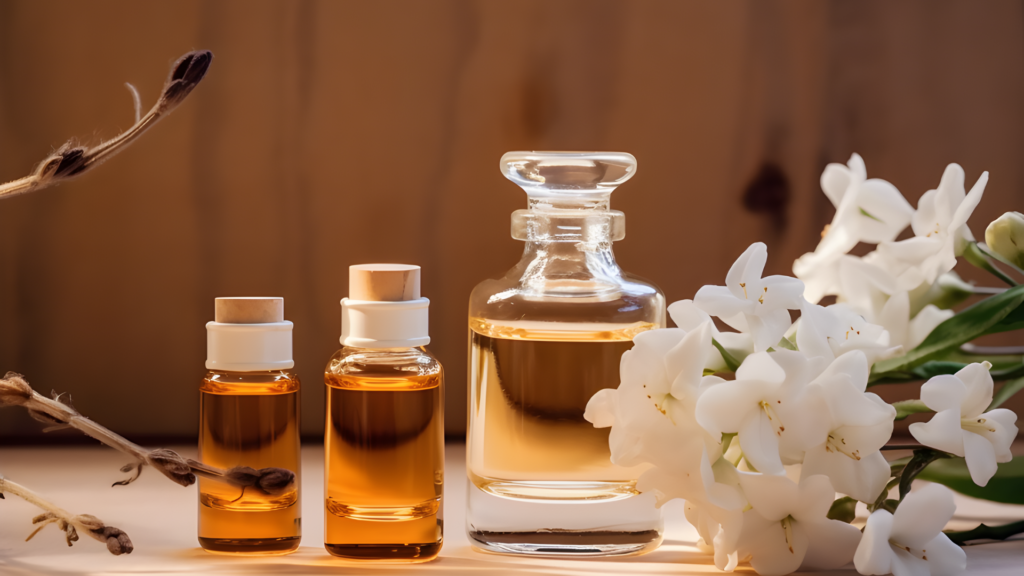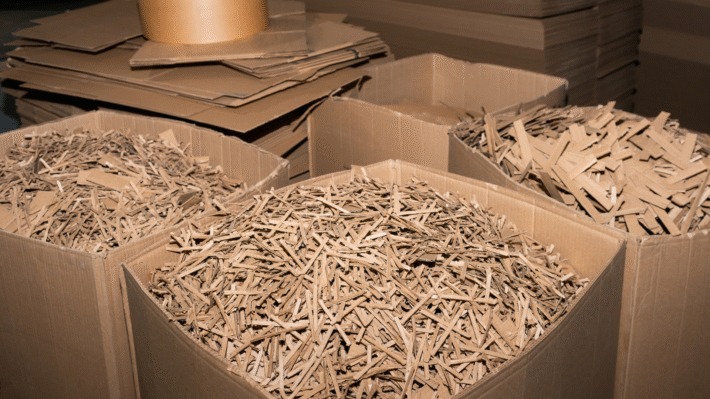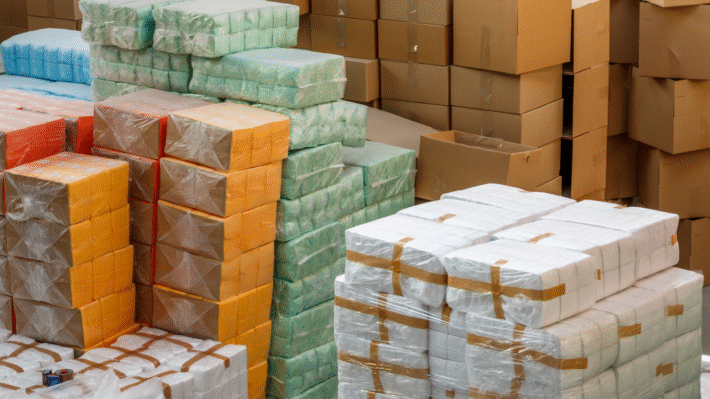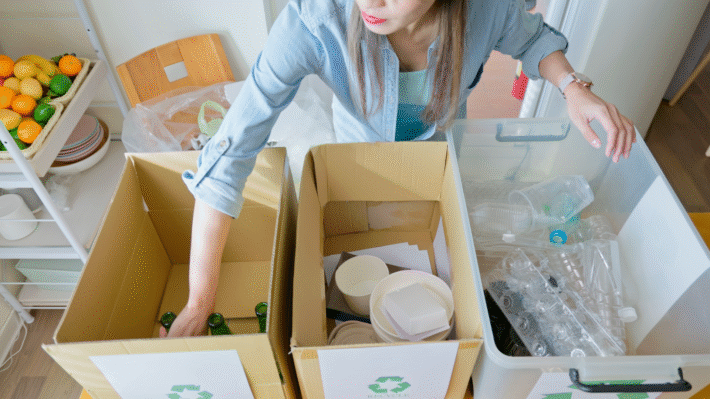Finding Success in Sustainable Utilization of Fragrance and Essential Oil Waste

Are you intrigued by the idea of making the fragrance and essential oil industry a little greener? You’ve come to the right place! Creating Circularity in Fragrance and Essential Oil Waste Supply Chain by Extracting Residual Compounds for Secondary Applications is our exciting mission. In the not-so-rosy underbelly of fragrance and essential oil production hides the grim reality of significant waste. But what if we could flip the script? What if waste wasn’t waste at all, but the birthplace of new, beneficial compounds for different industries? This is the eco-friendly future we’re exploring, envisaging a circular economy where we squeeze more value out of waste and transform it into anti-aging creams, flavor enhancers, or even biofuel! Prepare to dive deep into an ocean of possibilities, exploring sustainable extraction methods, upcycling techniques, and uncovering the hidden treasures of waste valorization!
Introduction to Fragrance and Essential Oil Waste
Ever catch a whiff of a fresh spritz of perfume? Or felt comforted by the scent of lavender essential oil? What we don’t usually ponder is the behind-the-scenes action that goes in creating these fine smells, especially the waste elements that are part and parcel of the process. Let’s throw light on this less-talked-about side of beloved fragrances and essential oil products.
Waste in Fragrance and Essential Oil Production
Today, folks, we’re marching right into the trenches of the fragrance and essential oil (EO) industries to mix it up with the not-so-pretty side of things – waste production.
Types of Waste
It might come as a surprise, but EO and fragrance production churns out a considerable amount of waste. First off, we have plant biomass – those discarded plant bits and pieces leftover from extraction. Then we’ve stumbled upon distillation and solvent residues – the leftovers from breaking those plants down, and they can be heavy hitters in the waste department. Another culprit? Byproducts, which are those extra, usually unwanted, substances that pop up during extraction. And lastly, don’t get me started on expired products – those out-of-date fragrances and oils that got left out in the cold.
Impact of Waste
Now, the waste from EO and fragrance production is like that really loud, obnoxious neighbor – they cause problems. Environ-mental problems, like careful-or-you’ll-get-stung acidification or climate change. Then there’s the economic bruising – extraction wastes valuable compounds and hits the industry where it hurts: the wallet.
Current Disposal Methods
So how do we get this waste under control? Well, currently, it’s limited to dumping or incineration, but those aren’t the greatest solutions. Dumping can lead to soil degradation and water contamination, while incineration pumps harmful stuff into our air. Yuck.
The good news? There’s actually potential in that waste – kind of like discovering the class clown is actually a genius. If we extract residual compounds, we can submit them for secondary applications, making something valuable out of what was once a problem. Stick with me, folks, and I’ll show you how we can give this waste a Cinderella-like transformation – from a pumpkin into a carriage. Or, in our case, from irritating waste into a potential goldmine.
Identifying Residual Compounds
When we peek into the waste generated by fragrance and essential oil (EO) production, you may be surprised to find treasures hiding. These treasures are valuable compounds like polyphenols and terpenes. But before we dive into their uses, let’s take a closer look at these chemical wonders.
Valuable Compounds in Waste
Polyphenols and Terpenes
Polyphenols are naturally occurring compounds found in a wide variety of plants. They have their own kind of superpowers because they’ve got antioxidant and anti-inflammatory properties. Terpenes are organic compounds produced by plants too. They are usually what gives a plant its unique aroma or flair.
These compounds, although found in what we call ‘waste’, are far from worthless. They can do wonders in plenty of applications. Don’t believe me? Let’s explore their power in the world of cosmetics, pharmaceuticals, food/beverage industry, agriculture, textiles, and even biofuel production.
Secondary Applications
Cosmetics: Anti-aging and Moisturizing
Step aside, harmful synthetic products! Polyphenols and terpenes from waste can provide safe and natural solutions for skincare. Their anti-aging properties can help reduce wrinkles and keep the skin youthful. Plus, the moisturizing properties can keep dry skin at bay by providing necessary hydration.
Pharmaceuticals: Antimicrobial Uses
Got some nasty germs around? Polyphenol-rich and terpene-based compounds may lend a helping hand! Recent studies suggest they can play a role in developing new antimicrobial treatments.
Food and Beverage: Flavor Enhancers
Ever wondered how flavor enhancers work? Let’s turn to polyphenols. They can work their magic in the food and beverage industry by boosting the taste of foods and drinks.
Agriculture: Pesticides and Biofertilizers
Farmer friends, listen up! Polyphenols and terpenes can help agriculture too. They can be turned into effective and environment-friendly pesticides and biofertilizers, helping crops grow healthily.
Textiles: Scented Fabric Treatments
Ever longed for long-lasting freshness in your fabrics? The introduction of terpenes in the textile industry can make scented fabrics a reality.
Biofuel Production
And as for the big one – energy. Polyphenols and terpenes can also be converted into an eco-friendly source of energy – biofuels.
See? Who would have thought our so-called ‘waste’ could be so valuable? Identifying these residual compounds helps us transform what we once considered waste into resources, bringing us one step closer to circularity in the fragrance and EO industry.
Processes for Extracting and Using Residual Compounds
When we talk about creating a circular supply chain in the fragrance and essential oil industry, the extraction process of residual compounds from waste is a crucial step. The goal here is to repurpose these valuable leftovers into useful secondary applications – extending their life and value considerably.
Sustainable Extraction Methods
Sustainable extraction methods are not just about being eco-friendly. They’re also about ensuring that we can continually draw value from our resources without depleting or damaging them. Let’s explore some of these exciting methods:
Supercritical CO2 Extraction
First on the list is Supercritical CO2 Extraction. This process takes carbon dioxide, a gas we all know and literally breathe out, and turns it into a fluid state by applying extremely high pressure and temperature. This fluid state of CO2 then acts as a solvent to extract essential oils and other compounds from plant materials in an efficient, sustainable, and non-toxic way.
Enzyme-assisted Methods
Next, we have the Enzyme-assisted Methods. In these, we unleash nature’s tiny workers, enzymes, to break down complex plant materials into simpler compounds. Imagine if we had a bunch of tiny scissors cutting down a big sheet of paper into little pieces. These smaller, easier-to-handle pieces are easier for us to extract and use.
Solvent-free Microwave Techniques
Did you know your microwave is a champ at sustainability? Yup, solvent-free microwave techniques involve the use of – you guessed it- microwaves, to effectively extract essential oils. It needs no solvents and uses less energy, making it a winning choice for our green planet.
Ultrasound-assisted Extraction
Finally, there’s Ultrasound-assisted Extraction. You knew ultrasounds were great for seeing inside bodies and figuring out if it’s a boy or a girl. But did you know they also work wonders for extracting useful compounds from plant material? By generating minute bubbles that explode amidst plant cells, they enable efficient extraction of their valuable components.
Upcycling and Valorization
Let’s now talk about what happens after extraction. The extracted compounds are not immediately ready to land in that perfume bottle or cream jar. Upcycling is necessary. This process involves filtration, purification, and blending of these compounds to make them suited for secondary use.
Valorization is where we ascribe value to these upcycled components, transforming them from mere ‘residue’ or ‘byproducts’ to potent, saleable ingredients that enhance various products.
In a nutshell, by seeking out sustainable extraction methods and embracing upcycling and valorization, we can start reshaping the fragrance and essential oil industry’s supply chain. Not only will this contribute to a healthier planet, but it could also mean big bucks for forward-thinking businesses.
Creating a Circular Supply Chain
Collection and Partnerships
In a world where resources are finite, the creation of a circular supply chain is critical. This process kicks off with the collection of waste from fragrance and essential oil production. What once was regarded as rotten residue is now seen as hidden gold, brimming with viable compounds just waiting to be utilized.
This shift in perspective has been made possible through the establishment of solid partnerships. It’s the dedicated producers, discerning distillers, and reliable recyclers who have taken up the torch in this crusade against waste. Their collective efforts have made it possible to tap into a resource that has been largely untouched.
Industry Collaboration
We’ve heard the adage “teamwork makes the dream work,” and in this case, it rings true more than ever. To ensure circularity remains not just a possibility but a reality, collaboration across multiple industries is necessary.
Yet, this isn’t just about a shared responsibility. It’s about sharing the bounty and reaping the rewards. Take the textile industry for instance. Scented fabric treatments derived from these residual compounds can add an appealing edge to their products, opening new markets and revenue streams. Or consider the pharmaceutical industry. These same compounds can be harnessed for therapeutic and antimicrobial uses. By integrating these byproducts into various sectors, waste is transformed into wonder.
Economic Models for Circularity
Of course, this isn’t just about environmental savvy—it’s about economic smarts too. Balancing the books is key in making circular supply chains sustainable for the long term. A careful cost-benefit analysis will reveal the immense potential revenue streams just sitting in what was once considered waste.
In conclusion, creating a circular supply chain isn’t just about doing what’s best for the environment, though that certainly is a big part. It’s about repurposing, reusing, and reimagining what we once considered disposable, transforming it into something valuable. And in doing so, it sets the stage for a future that’s more sustainable, more collaborative, and definitely more fragrant.
Challenges and the Future of Circularity
Oh, friends. Here’s where we hit the juicy crux of it – the challenges, yes, and the sparkling future as well. Better strap in, because it’s going to get interesting!
Overcoming Technical and Economic Barriers
Well now, the most daunting barriers always seem to be the hardest ones to topple, aren’t they? In this arena, technical and economic hurdles have been the traditional roadblocks. For instance, the initial cost of setting up extraction and recycling systems can be a biggie. Then, there’s the tricky matter of navigating the technical complexities of extracting valuable residual compounds. Not to mention, rising to the challenge of integrating these practices is no easy task. However, these obstacles are not insurmountable. Innovative technologies, collaborations and investments can and are making circularity feasible. Invest more today, save and gain much more tomorrow. It’s a hard sell, but it’s the truth.
Raising Awareness Among Consumers and Businesses
Now, let’s turn our attention to the audience. Many times, it is lack of awareness that stands as the primary hindrance. Consumers are largely unaware of the potential of residual fragrance and essential oil waste. And businesses? They often overlook the monetization potential in creating a closed-loop system and secondary products. Our job? To educate, to enlighten and to engage. Time to ramp up the awareness game, folks.
Future Innovations in Waste Valorization
But let’s not forget, the journey to circularity is chock full of opportunities. The future of waste valorization is brimming with promise. There’s talk of innovations in biomaterials, smarter, cheaper extraction methods and even AI-driven waste management. That’s right, folks, AI could be the next game changer in this arena. Imagine this – using data-driven insights to optimize extraction, and then producing secondary products with higher efficiency and lower cost. That, my friends, is the future and it’s brighter than a sunbeam catching a magnifying glass!
So yes, there are challenges. The barriers are standing there, all rowdy and daunting. But the future of circularity in the fragrance and essential oil industry is worth it. Embrace the challenge, ride the wave, and hold on tight. The scent of success? It’s getting sweeter.
Conclusion on Creating Circularity
Look my dear friends, just as the clock moves in a perfect cycle marking the passage of time, it is essential that we embrace a circular model for the fragrance and essential oil industry. It’s not a matter of ‘if,’ but ‘when.’ It’s high time that we face the music and realize that nature isn’t a bottomless pit.
Creating circularity in the fragrance and essential oil waste supply chain and extracting residual compounds for secondary applications is not a concept from a far-off future. It’s here and now. This process, akin to a treasure hunt, is all about finding value where we once saw waste.
Just imagine the possibilities! Transforming waste into anti-aging potions in cosmetics, flavour enhancers in food and beverages, or even fuel for our cars and trucks. It’s like magic, but better. It’s sustainable, feasible, and beneficial.
However, as we journey towards this new dawn, we must be ready to tackle numerous challenges. There will be mountains, and valleys, and technical issues, and economical considerations, but it’s a worthy race. With awareness, collaboration, and the use of innovative technologies, we can cross all hurdles.
Yes, the journey toward waste valorization and circularity has just begun, and the road might be rocky. But trust me, the destination, a sustainable and green world, is worth every effort. Let’s take this leap towards progress and resilience.
In the immortal words of the great Neil Armstrong, “That’s one small step for a man, one giant leap for mankind!” Let me tell you, creating circularity in the waste supply chain is our small step towards a giant leap. And together, we can make it.
I challenge you to be a part of this revolution, this journey towards turning waste to gold, towards a win-win scenario for both industries and nature! Together we can, and we will, make a difference. For remember, “The future depends on what we do in the present.” – Mahatma Gandhi
Are you ready to make a difference? Let’s step into the future and make a greener world not a dream, but a reality. Embrace the circle of life, embrace circularity. Because every end is just a new beginning!



